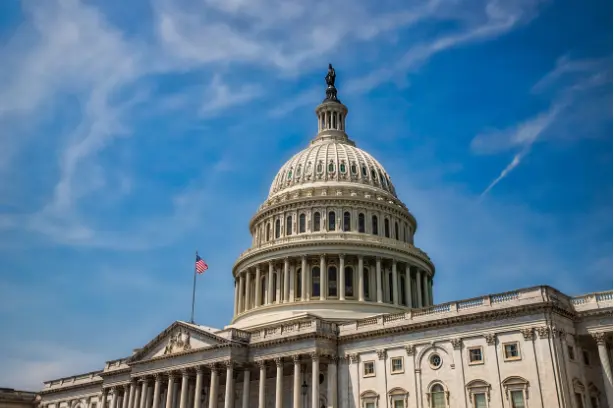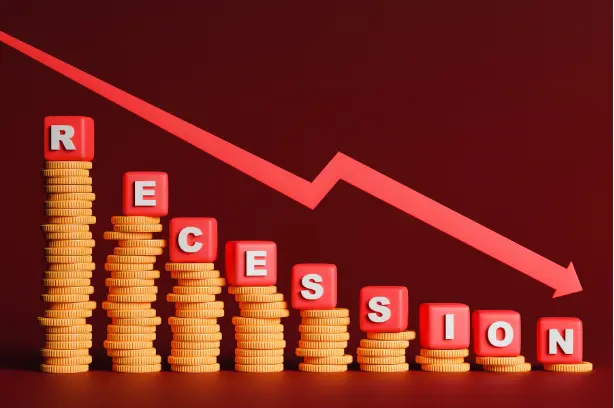By Preserve Gold Research
“Sign all necessary documents to charge Mexico and Canada a 25% tariff on ALL products coming into the United States.” With those words, President Trump set in motion a plan that some experts say could change the landscape of global trade. The proposed tariffs on Mexico and Canada, two of America’s biggest trading partners, have sparked concerns among economists who fear the potential consequences of such a move. Others see it as a necessary step towards balancing trade deficits and protecting American industries.
Rooted in concerns over national security and protecting American workers, Trump’s tariffs have been a key component of his economic policies. The administration argues that these tariffs will help bring back jobs to the US while reducing the trade deficit—a long-standing issue for the country. But beyond the economic implications, the tariffs have also been seen as a way for Trump to fulfill his campaign promise of putting America first. With the U.S. being Canada’s and Mexico’s largest trading partner, leverage over these countries has allowed the Trump administration to clamp down on issues such as immigration and border security.
Trump has intertwined two key elements of his agenda by tying economic policies to broader political objectives. A way to combat illegal drug trafficking and address cross-border immigration issues while also protecting American industries, the tariffs have become a multifaceted tool in the president’s trade arsenal. However, critics warn that these policies may do more harm than good, not only for the targeted countries but also for American consumers and businesses. Will Trump’s tariffs bolster the American economy, or will they plunge the US and its allies into a trade war with no clear winner? Sharply divided opinions and ongoing negotiations with other countries suggest that the answer is far from certain.
The Dual-Edged Nature of Tariffs
While the intermingling of politics and economics is not uncommon in global trade, the implementation of tariffs by the Trump administration has been of particular interest due to their widespread impact. Tariffs, which are taxes levied on imported goods, have been used by countries for centuries to protect domestic industries. By making imported goods more expensive, tariffs can make domestic products more competitive and boost local economies. However, they can also lead to retaliatory tariffs from other countries, creating a cycle of economic penalties that can harm both sides. Given the interconnected nature of today’s global economy, unilateral tariff policies can quickly escalate into full-blown trade wars, with consequences that reach far beyond just the targeted industries.
Inflation on the Horizon?
Consumers often feel the immediate impact of tariffs in the form of higher prices for goods. When a tariff is placed on imported goods, the cost of those goods often increases as the tariff is passed down from distributors to retailers and eventually to consumers—something that Trump himself has acknowledged. “We may have in the short term, a little pain,” he said in response to criticism of his tariffs, “but long term, the United States has been ripped off by virtually every country in the world.”
Despite agreeing to a 30-day stay on tariffs for Mexican and Canadian imports while negotiations take place, the Trump administration has pushed forward with global 25% steel and aluminum tariffs. “It’s a big deal. This is the beginning of making America rich again,” Trump said as he signed the tariffs. “No exceptions, no nothing,” he added, effectively shutting down any potential for exemptions or negotiations.
For American consumers, this could mean higher prices on everything from cars to appliances to canned goods. As the cost of imported materials increases, domestic producers often raise their prices to match, citing the need to cover their expenses. In cases where domestic production is not possible, consumers may be left with fewer options or have to turn to higher-priced alternatives. Despite being limited to specific industries, tariffs have the potential to affect everyday goods and, eventually, the wallets of American consumers.
“Adding new tariffs on basic industries and eliminating mitigating options…is especially disruptive at a time when the Administration is looking to boost American manufacturing,” said Tiffany Smith, Vice President at The National Foreign Trade Council, a pro-trade organization. This sentiment is shared by many industry leaders who worry that the tariffs will negatively affect their businesses and, ultimately, the economy as a whole.
Importers and exporters will be forced to revisit their entire supply chains, pivot their business models, and brace for steep cost adjustments. The pressure is particularly acute for industries like automotive manufacturing, where global supply chains are heavily intertwined and rely on just-in-time delivery systems. In these cases, even small disruptions or price changes can have ripple effects throughout the entire production process. Should Trump’s 25% tariffs on all Canadian and Mexican imports go into effect, the automotive industry alone could see costs rise by billions of dollars.
“The industry will shut down in the U.S. and Canada and Mexico within a week, much like we saw it happen during the first phase of the pandemic and the Ambassador Bridge blockade,” said Flavio Volpe, president of the Automotive Parts Manufacturers’ Association in Canada. With over $170 billion in automotive parts and vehicles imported from Canada and Mexico in 2024, some fear that these tariffs could lead to job losses and factory closures in the United States as well.
Lumber prices, already inflated due to ongoing wildfires, could also see a major jump if Trump follows through on his threats to impose tariffs on Canadian imports. With the expiration of the U.S.-Canada agreement on softwood lumber, duties on lumber imports have already climbed by over 14% in the last year. Add to this the potential for an additional 25% tariff, and levies on Canadian lumber could rise to over 40%—a significant blow for US construction companies and builders who rely heavily on Canadian imports. “I do believe the volatility could be reminiscent of what we experienced in COVID,” warned Kyle Little, chief operating officer at Sherwood Lumber. With nearly all new homes in the US using wood-framed construction, experts say any increase in lumber costs would inevitably be passed on to home buyers.
This scenario risks perpetuating an inflationary cycle that self-fulfills as consumer expectations worsen. When prices are anticipated to rise, consumer spending habits often shift to preempting increasing costs, which ironically drives prices higher. The cycle of rising prices and consumer reactions can easily spiral out of control if not carefully managed, as seen in past inflationary periods such as the OPEC oil crisis of the 1970s. During the “Great Inflation” of that decade, the US saw an average inflation rate of 6.8%, over double its long-term average.
The Broader Implications of Escalating Tariff Policies
Looking beyond immediate supply chain disruptions and price increases, economists warn that the long-term implications of tariffs could be even more damaging. According to Ernst & Young, the combined 25% tariffs on Canadian and Mexican imports and 10% tariffs on Chinese goods could weigh down US GDP growth by 1.5% in 2025 and 2.1% in 2026. About two-thirds of economic activity in the US is driven by consumer spending, and experts say increased prices on everyday products could lead to a slowdown in consumption, ultimately impacting economic growth. And with elevated uncertainty in the market, businesses may also be hesitant to make long-term investments, further impacting economic growth.
While proponents of tariffs often argue that higher trade barriers can protect domestic industries and create jobs, others caution that these are often low-wage, low-value-added positions. Industries reliant on protected manufacturing, such as basic assembly or raw material processing, may experience a modest increase in employment. However, these jobs often come with lower wages and limited opportunities for career growth. “Erecting a tariff wall around the U.S. and replacing traded goods with domestically-made ones would force the creation of low-wage, low-value-added jobs—when workers to fill those jobs aren’t even available,” said John Murphy, senior vice president of international policy at the US Chamber of Commerce.
Economists argue that tariffs risk stagnating economic progress instead of fostering innovation and high-skilled industries by diverting resources toward less competitive industries. And with the rise of automation, many jobs that may be temporarily protected by tariffs could eventually be replaced by machines. The very industries that tariffs aim to protect may end up losing out in the long run as they fail to keep up with global competition.
Besides potential job losses and slower economic growth, analysts also point to the looming prospect of a full-scale trade war. Retaliatory tariffs from Canada and Mexico are all but assured, with the EU and China preparing to respond in kind. Following President Trump’s announcement of the proposed 25% tariffs, Canadian Prime Minister Justin Trudeau rolled out plans to impose tariffs on over $30 billion worth of US goods as “countermeasures” against the United States. “Tariffs against Canada will put your jobs at risk, potentially shutting down American auto assembly plants and other manufacturing facilities,” Trudeau warned, addressing American workers directly.
While the imposition of tariffs was delayed for the sake of further negotiations, the threat of a wide-scale trade war still looms large. In response to the 25% planned tariffs on Mexican goods, Mexican President Claudia Sheinbaum also vowed to strike back with her own tariffs. “I’ve instructed my economy minister to implement the plan B we’ve been working on, which includes tariff and non-tariff measures in defense of Mexico’s interests,” Sheinbaum stated.
Similarly, following the US’s reinstatement of steel and aluminum tariffs, the European Commission drafted a list of US goods that could be targeted for retaliatory tariffs. “Unjustified tariffs against the European Union will not be left without a response. We will take proportional and clear countermeasures,” declared European Commission President Ursula von der Leyen. “Tariffs are taxes—bad for business, worse for consumers,” she added, emphasizing the potential impacts on both sides of the Atlantic.
Combined with the ongoing trade dispute between the US and China, the tit-for-tat tariffs threaten to escalate into a global trade war, affecting economies around the world. As the flow of goods and services is disrupted and prices for consumer goods weigh heavily on household budgets, a growing number of economic experts agree that tariffs will complicate the Fed’s ‘last mile’ to 2% inflation.
Rising Prices and Rate-Cut Dilemmas
With both short- and long-term impacts looming, the question remains whether President Trump’s tariffs will serve their intended purpose. Will they, as he has stated, bring jobs back to America and reduce the trade deficit? Or will they backfire, causing more harm than good to the US economy? While there is no easy answer, any increase in prices will add to the challenges faced by the Fed as it attempts to guide the economy and maintain stable inflation rates. With January’s CPI reading surprising to the upside, the Fed’s anticipated rate cuts may become more difficult to justify in the coming months. Double-digit tariffs have historically left long-lasting scars, and the longer these policies persist, the steeper the price the US economy may ultimately pay, according to some economists.
While the shift in economic policies may be unsettling for some, with change comes opportunity. For Americans concerned about inflation’s impact on their purchasing power, diversifying with precious metals like gold and silver can help provide a hedge against rising prices. As tensions escalate and uncertainty surrounding global trade persists, gold prices have continued to rise. The yellow metal outpaced the S&P 500 in 2024 and handily outperformed other traditional safe-haven assets like US Treasuries—a trend that is expected to continue as long as trade tensions persist.
“The gold bull market looks set to continue under Trump 2.0 with trade wars and geopolitical tensions reinforcing the reserve diversification or de-dollarization trend and supporting emerging markets official sector gold demand,” according to Citi Research. With analysts predicting gold prices to continue their upward march, now may be an opportune time for Americans to consider adding these time-tested, inflation-resistant assets to their savings.







